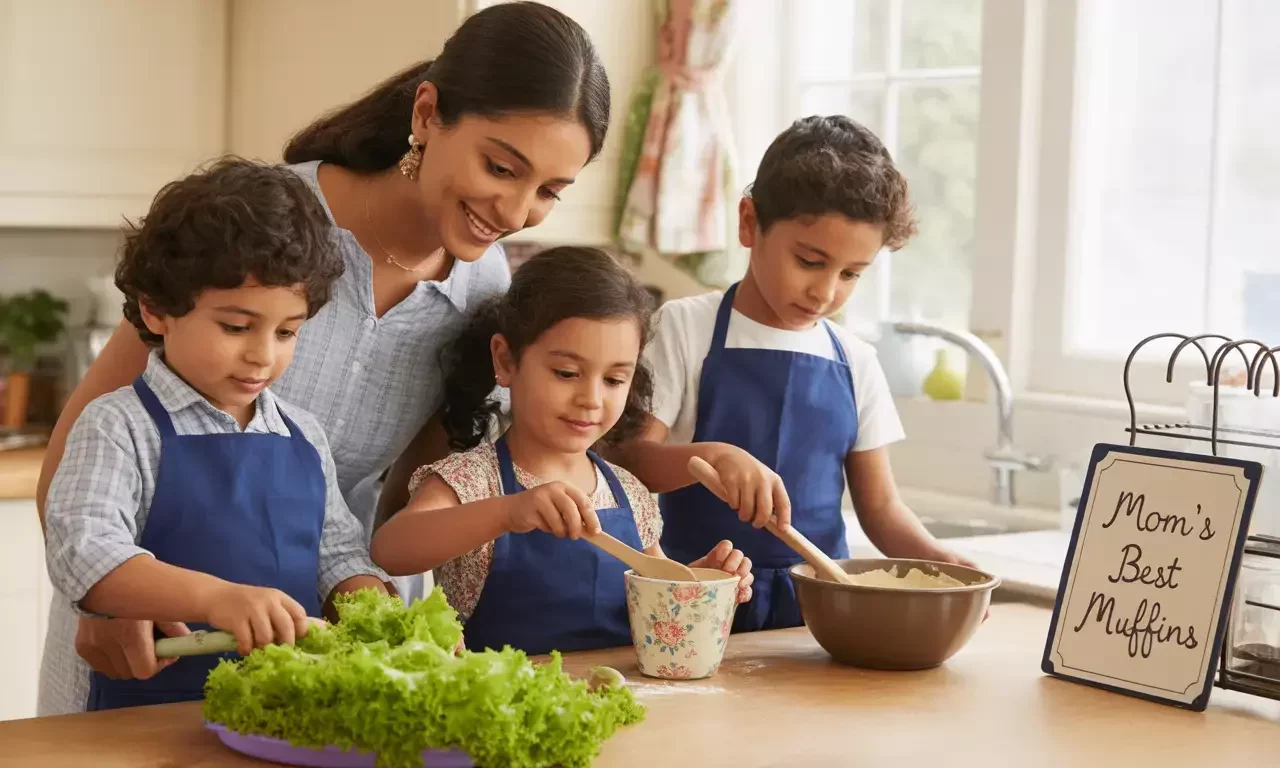 🌟 Introduction
🌟 Introduction
Parents often ask: “I know cooking is important for kids, but how do I actually start at home?” After reading our Age-Wise Kitchen Task Chart, many families are excited but unsure about the next step. The secret is not just what tasks kids can do, but how you guide them safely and consistently.
At Culinary Guru® Institute of Hotel Management, we encourage parents to use cooking as a fun, practical way to teach life skills. Here’s how to apply age-appropriate kitchen skills at home—complete with real-life examples, safety tips, and the right tools.
🏠 Step 1: Create a Kid-Friendly Kitchen Space
Before children even touch ingredients, set up a space that makes them feel safe and confident.
- Dedicated workspace: Use a non-slip mat or child-height table.
- Tools they can handle: Blunt knives, small mixing bowls, and colorful measuring cups.
- Encourage independence: Give them their own apron, spoon, or “mini-chef” corner.
💡 Pro Tip: Having a kid-only drawer with safe tools helps kids feel ownership while keeping them away from sharp or hot items.
👶 Ages 3–5: The Little Helpers
At this stage, children enjoy exploring textures, colors, and smells. Tasks should be simple, playful, and supervised.
Real-Life Example:
- Ria, a 3-year-old, tears spinach leaves while her mother prepares dal. She feels proud of her “green job.”
Suggested Tools:
- Plastic spoons, mixing bowls, child-safe butter knife.
- Step stool for counter access.
Parent Tip: Focus on mess-friendly tasks. If flour spills or lettuce drops, treat it as part of the fun.
🧒 Ages 6–9: The Curious Learners
Now kids can follow short instructions, measure ingredients, and help assemble meals. This is the perfect age to introduce math and sequencing through cooking.
Real-Life Example:
- Aarav, 7, measures rice using cups while learning basic fractions. He proudly announces, “Two cups means double the rice!”
Suggested Tools:
- Child-safe serrated knife, small grater with guard.
- Measuring spoons and recipe cards with pictures.
Parent Tip: Turn cooking into a game—counting spoons of sugar or reading steps aloud makes learning natural.
👩 Ages 10–13: The Independent Explorers
Pre-teens are ready for bigger responsibilities. They can handle knives, heat (with supervision), and start preparing simple meals.
Real-Life Example:
- Maya, 12, bakes muffins for her family every Sunday. Her father supervises the oven, but she does everything else independently.
Suggested Tools:
- Beginner’s chef knife, frying pan, spatula.
- Oven mitts and kitchen timer.
Parent Tip: Teach kitchen safety—how to hold knives, how to stir hot food, and why hygiene matters. These are the skills they’ll carry for life.
🧑🍳 Teens 14–16+: The Young Chefs
Teenagers crave independence. Cooking helps them build real-world skills like meal planning, budgeting, and nutrition awareness.
Real-Life Example:
- Sameer, 15, prepares Friday dinner for his family—complete with a menu, grocery shopping, and cooking chapati, dal, and salad.
Suggested Tools:
- Standard chef’s knife, stovetop, oven, and blender.
- Baking trays, rolling pin, and recipe notebook.
Parent Tip: Encourage teens to take charge of a weekly meal. It boosts confidence and prepares them for college or hostel life.
🔐 Step 2: Establish Safety Rules
Cooking is exciting, but safety is non-negotiable. Teach kids these golden rules:
- Wash hands before and after handling food.
- Always use a chopping board—never cut in the air.
- Stove and oven only with permission (until confident teens).
- No running in the kitchen.
- Cooking isn’t done until the kitchen is clean.
💡 Pro Tip: Post a “Kitchen Rules” chart on the wall so kids remember them easily.
🎨 Step 3: Keep Kids Motivated
Children thrive on encouragement and fun.
- Celebrate mistakes: “Our cookies are burnt, but we learned to set the timer!”
- Give them choice: Let kids pick a recipe once a week.
- Praise effort, not just outcome: “You measured perfectly today!”
📈 Why This Matters
Cooking teaches kids and teens much more than food preparation. It:
- Builds independence step by step.
- Improves academic learning through real-life math and science.
- Encourages healthy eating habits.
- Strengthens family bonding.
At Culinary Guru®, we see children transform into confident, capable young chefs—one safe kitchen task at a time.
❓ Quick FAQ

